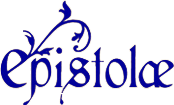Isabella/Elizabeth of Anjou
Overview
Biography
(See also Genealogical Table(s): 2.1, 2.2, 2.3, 2.4.1, 2.4.2, 2.4.3, 3, 4.1, 4.2.)
Isabella was the daughter of Charles I of Anjou, king of Naples, and Beatrice of Provence. She was born c.1264/65 and sent to Hungary at age 5 or 6, as the betrothed of Ladislaus IV, whom she married in 1273, taking the name Elizabeth; her brother Charles II married Ladislaus’s sister, Maria. Isabella and Ladislaus had no children and there were problems in the marriage. After his younger brother Andrew died, in 1278, leaving Ladislaus the last of the Árpáds, there was pressure on the couple to reconcile; they were closed up together by the barons in 1280, but nothing came of it. Ladislaus took a Cuman mistress and repudiated his wife. The pope and his legate, Philip, bishop of Fermo, intervened on Isabella’s behalf, and there were temporary reconciliations, but they did not hold. The archbishop of Esztergom, Lodomerius, even ordered the bishop of Transylvania to assist the queen’s officials to collect her revenues from Bezterce in 1284. (Zsoldos, The Árpáds, 54-55).
In 1286, Ladislaus had Isabella enclosed in a cloister on the Island of Rabbits and deprived her of all the goods she was entitled to, the only time a queen lost all her estates at once in the history of Árpád queens (Zsoldos, 65). The queen suspected that her rival and various enemies, at one point including the king’s sister, Elizabeth, had intrigued against her. Archbishop Lodomerius of Esztergom described the princess as a “serpentine seeder” of discord between the king and queen (Zsoldos, The Árpáds, 67 and fn.288). Pope Honorius IV wrote that Ladislaus must free her and restore her possessions. She was probably free by July 1287, but the king did not surrender the reginal lands, so archbishop Lodomerius of Esztergom convoked an assembly at Buda in November 1287 and read the pope’s letter. The assembly ordered the queen’s revenues restored. Ladislaus pretended to accept the demands, but deprived Isabella once again of her lands and revenues, transferred the lands to his Cuman lover, dissolved the queen’s court and may have threatened her life and the life of one of her most loyal supporters (see Zsoldos, 67-68). Finally at the assembly of Föveny, in 1289, they were reconciled and the queen was able to reclaim her reginal lands.
Ladislaus was killed in 1290 by Cumans with whom he had had a complicated relationship: his mother was a Cuman, his lover was Cuman, he supported them when the papal legate Philip tried to convert them by force, but they revolted at times and he fought them, defeating them in a fierce battle at Lake Hód, and eventually they killed him, though the immediate motivation is not known. The queen remained in Hungary for ten years, although her family, the Angevins, thought of the new king, Andrew III, as a usurper, but there was no known conflict between him and Isabella. She returned to Naples in 1300 and took the veil as a Dominican. She died in 1304.
The information about Isabella’s life is drawn from Attila Zsoldos, The Árpáds and Their Wives, Queenship in Early Medieval Hungary 1000-1301 (Rome: Viella, 2019).
Letters from Isabella/Elizabeth of Anjou
A letter to Abbot of Somogy (1982, December 7)A letter to Chapter of Alba (1283, November 29)
A letter to Chapter of Alba (1283, September 15)
A letter to chapter of the church of Buda (1289, August 16)
A letter to Peter, in the service of Queen Isabella (1275, October 6)
A letter to Public (1274)
A letter to Public (1274)
A letter to Public (1274)
A letter to Public (1275)
A letter to Public (1276, August 3)
A letter to Public (1276, May 10)
A letter to Public (1276, November 27)
A letter to Public (1276)
A letter to Public (1277, May 6)
A letter to Public (1277, November 15)
A letter to Public (1277)
A letter to Public (1278, January 20)
A letter to Public (1278, October 28)
A letter to Public (1280, February 24)
A letter to Public (1280)
A letter to Public (1280)
A letter to Public (1281)
A letter to Public (1281)
A letter to Public (1281)
A letter to Public (1281)
A letter to Public (1282)
A letter to Public (1282)
A letter to Public (1282)
A letter to Public (1283)
A letter to Public (1284, April 24)
A letter to Public (1284, April 24)
A letter to Public (1284)
A letter to Public (1284)
A letter to Public (1284)
A letter to Public (1284)
A letter to Public (1284)
A letter to Public (1284)
A letter to Public (1285)
A letter to Public (1287)
A letter to Public (1288)
A letter to Public (1288)
A letter to Public (1289, August 11)
A letter to Public (1289, June)
A letter to Public (1289)
A letter to Public (1290, January 28)
A letter to Public (1290, January 28)
A letter to Public (1290)
A letter to Public (1290)
A letter to The church of Buda (1278)
Letters to Isabella/Elizabeth of Anjou
A responseA response

